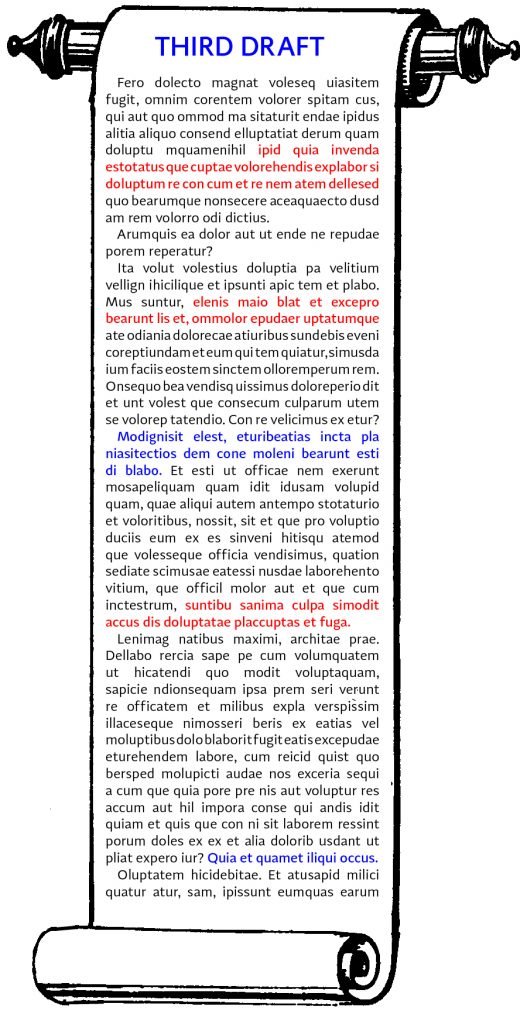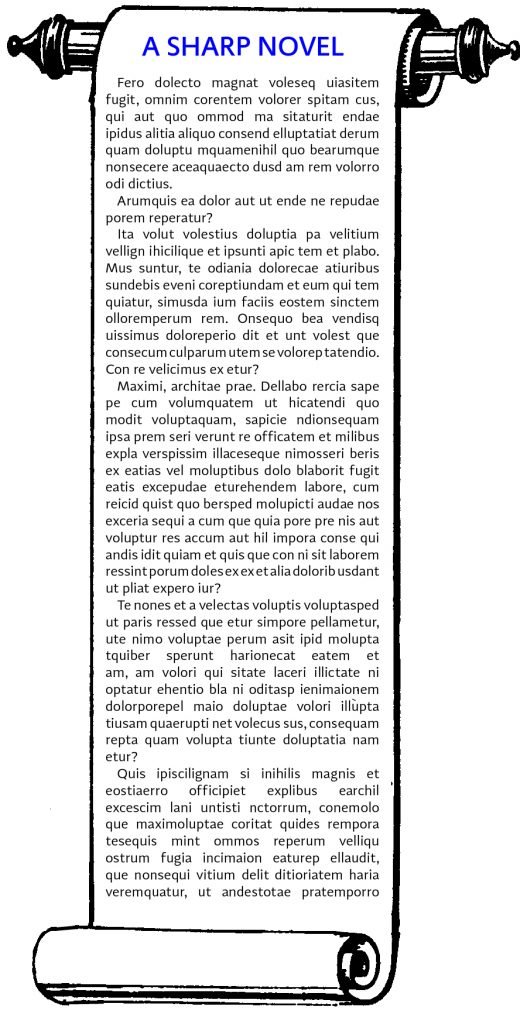You’ve probably heard of ‘painting by numbers’. There are also systems that claim to help you write by numbers and edit by numbers. They claim their algorithms will detect necessary editing revisions.
I don’t agree. No matter how many books these systems claim their algorithms are based on, go along to any book club. Six people, ten people, 18 people, all in a room and having read the same book. There will be a great divergence of opinions. And not one of them is wrong – or even right.
 WRITE IT
WRITE IT
Plotting
Authors and readers have preferences. Many authors claim they can write best by using the plotting approach, by outlining everything and then filling in the jigsaw.
Readers, especially of mystery and detective novels, like the thrill of following the plot, anticipating the twists and turns, and cheering on the hero(es). And cheering on the author.
Seat of the Pants
Other authors claim they write best in a stream of consciousness way, launching into the story arcs and seeing where they lead. There can be a greater richness to the writing, and a greater amount of work for the reader, when following these novels.
That’s not to say Pansters create better books than the Plotters. Readers come in all shapes and preferences, and over the years may change their preferences.
 REVISE IT
REVISE IT
Revising
How many times is enough? How many times should an author revisit their own words to polish and amend and update and finesse? I recommend three times, with the proviso it depends on your writing style.
Plotters will have the facts – locations, characters, story arcs – in good shape by the second revision. The Plotters’ third revision is the critical ‘what do I need to change to keep the reader engaged?’.
Pansters will have trimmed the book into a cohesive yarn by the second revision and will have used their preferred mechanism to tidy the structure and story arcs by the third revision.
Feedback
After the third revision, at the latest, the author needs feedback. What works? What doesn’t work? To what type of person will the book appeal? There are two good choices for the author now, and both are recommended.
First Readers
These are the trusted and knowledgeable people, known or invited, who can provide the author with preliminary feedback – friends, family, book club members, local librarian. One caveat: these are not necessarily professionals in the writing business and their views are therefore helpful but not definitive (unless the author is using a writing coach as a reader).
 EDIT IT
EDIT IT
Editing
There may be successfully published authors who say they don’t need editing. I don’t know of even one.
Engaged Editing
Developmental Editing and Line Editing (also known as Substantive, Structural and/or Comprehensive Editing) are undertaken by knowledgeable, experienced and reliable people.
The art and craft of the author’s storytelling will be examined, with particular emphasis on the flow and pace of the book. Do all the characters make sense? Do they add to the drama, the pace, the dynamics? Are all the characters real or are some just vanilla archetypes? Are there weak points, weak characters, awkward or unrealistic locations?
Dispassionate Editing
Copy Editing and Proof Reading are about rules – spelling, grammar, consistency, fact checking, localisation. These happen at the very end and are best undertaken by a professional. The worries of the author are over by now – this is the last, tiny wipe of the duster after the final spring clean.





